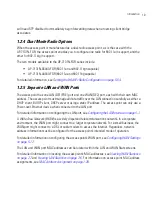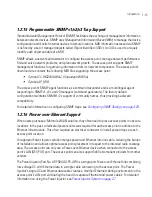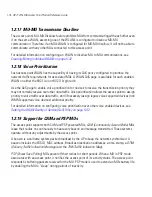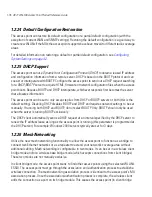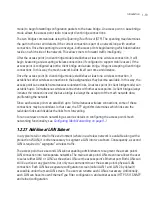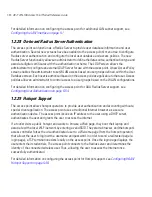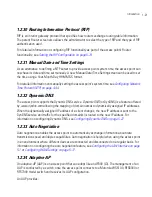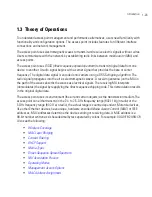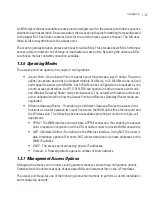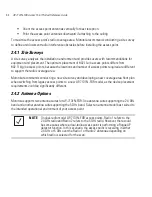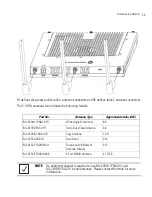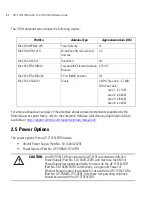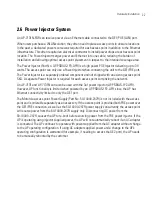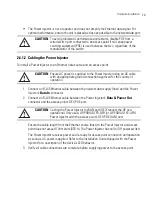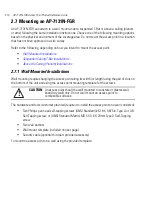
Introduction
1-23
1.3 Theory of Operations
To understand access point management and performance alternatives, users need familiarity with
functionality and configuration options. The access point includes features for different interface
connections and network management.
The access point uses electromagnetic waves to transmit and receive electric signals without wires.
Users communicate with the network by establishing radio links between
mobile units (MUs)
and
access points.
The access point uses
DSSS (direct sequence spread spectrum)
to transmit digital data from one
device to another. A radio signal begins with a carrier signal that provides the base or center
frequency. The digital data signal is encoded onto carriers using a DSSS
chipping algorithm
. The
radio signal propagates into the air as electromagnetic waves. A receiving antenna (on the MU) in
the path of the waves absorbs the waves as electrical signals. The receiving MU interprets
(demodulates) the signal by reapplying the direct sequence chipping code. This demodulation results
in the original digital data.
The access point uses its environment (the air and certain objects) as the transmission medium.The
access point can either transmit in the 2.4 to 2.5-GHz frequency range (802.11b/g/n radio) or the
5 GHz frequency range (802.11a/n radio), the actual range is country-dependent. Motorola devices,
like other Ethernet devices, have unique, hardware encoded
Media Access Control (MAC)
or IEEE
addresses. MAC addresses determine the device sending or receiving data. A MAC address is a
48-bit number written as six hexadecimal bytes separated by colons. For example: 00:A0:F8:24:9A:C8
Also see the following:
•
Wireless Coverage
•
MAC Layer Bridging
•
Content Filtering
•
DHCP Support
•
Media Types
•
Direct-Sequence Spread Spectrum
•
MU Association Process
•
Operating Modes
•
Management Access Options
•
MAC Address Assignment
Summary of Contents for AP-7131N-FGR
Page 1: ...AP 7131N FGR Access Point Product Reference Guide ...
Page 3: ...AP 7131N FGR Access Point Product Reference Guide 72E 126727 01 Revision A September 2009 ...
Page 4: ......
Page 55: ...Hardware Installation 2 11 ...
Page 68: ...AP 7131N FGR Access Point Product Reference Guide 2 24 ...
Page 90: ...AP 7131N FGR Access Point Product Reference Guide 3 22 ...
Page 148: ...AP 7131N FGR Access Point Product Reference Guide 4 58 ...
Page 300: ...AP 7131N FGR Access Point Product Reference Guide 6 72 ...
Page 338: ...AP 7131N FGR Access Point Product Reference Guide 7 38 ...
Page 635: ...Configuring Mesh Networking 9 23 5 Define a channel of operation for the 802 11a n radio ...
Page 648: ...AP 7131N FGR Access Point Product Reference Guide 9 36 ...
Page 672: ...AP 7131N FGR Access Point Product Reference Guide 10 24 line con 0 line vty 0 24 end ...
Page 692: ...AP 7131N FGR Access Point Product Reference Guide B 14 ...
Page 698: ...AP 7131N FGR Access Point Product Reference Guide B 20 ...
Page 702: ...AP 7131N FGR Access Point Product Reference Guide C 4 ...
Page 707: ......

